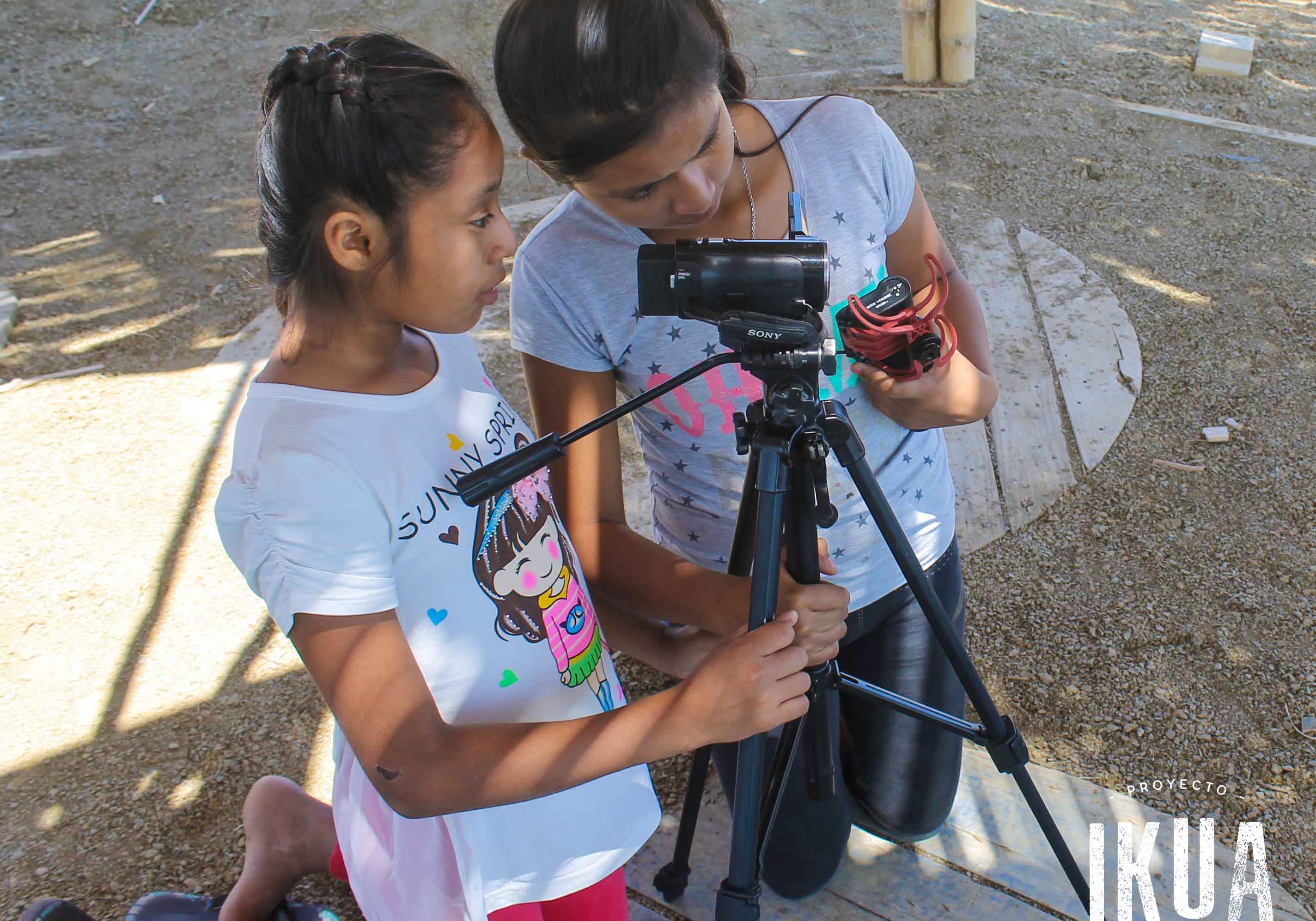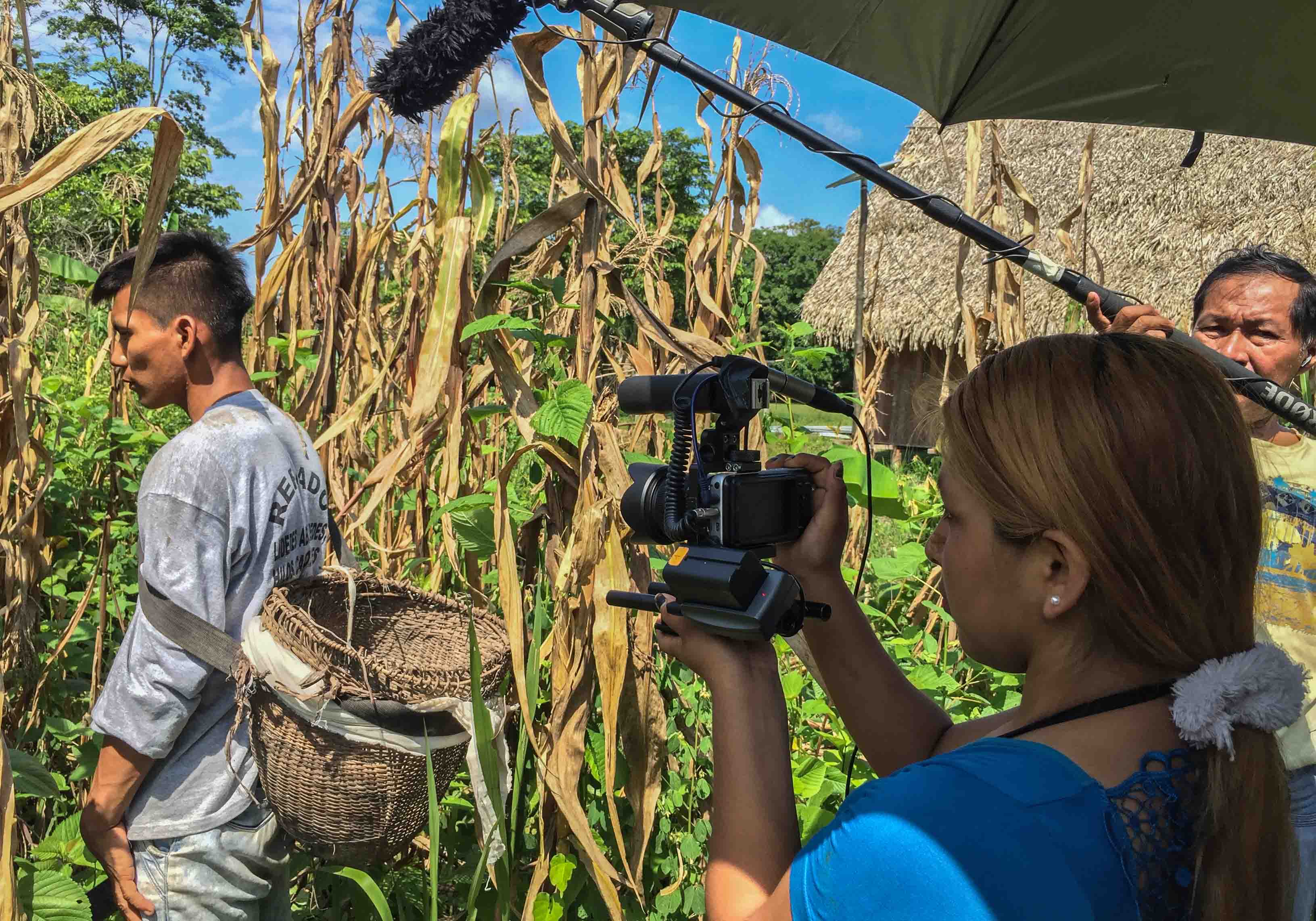Meet UQ Alumnus – Trilce Patron Lecca
Trilce Patron Lecca graduated from The University of Queensland with a Master of Communication (Communication for Social Change) in 2016. She now creates change through her work on participatory projects with at-risk communities in Peru. COVID-19 has placed these communities at greater risk, and as a result, Trilce has actively engaged with relief efforts aimed at small and isolated communities in the Peruvian Amazon. The School was grateful for the chance to speak with Trilce about her important work.

Making an Impact in Peru
I started a personal project called IKUA, where we explain and teach about participatory video to different members of the community and they teach us about their culture and current situation. IKUA means knowledge in the Kukama-Kukamiria (Amazonian) dialect. I decided to name the project IKUA as I believe it is about sharing knowledge – of all kinds.

The main objective of this project is to work with adolescents from vulnerable communities throughout Peru to reinforce their cultural identity and to promote critical thinking. The lack of identity is a major problem in Peru since 'western' and 'modern' ways of life are continuously promoted to people through mainstream media. IKUA tries to share information about how simple technologies can help us understand who we are, where we come from and where we want to go.

The project had its first session in Nina Rumi – a small community in the Amazon province of Loreto and the participants had a blast making their own movie and showing it to the rest of the community.

I also worked with Escuela de Cine Amazónico, which is a film school that was created in 2014 as an effort to provide a space where people from different regions of the Amazon and rainforest of Peru could benefit from education in audiovisuals and communications. I was also part of the first class of graduated students who attended the course, Amazon Documentary Production. The course lasted a month in the city of Pucallpa in Ucayali.
During my training, I met one of the directors and my professor at the time, Fernando Valdivia, and we kept in touch during my postgraduate studies at UQ and well after I graduated.
Fernado invited me to join him for a project with the Amahuaca community, to help him with a second participatory video workshop for the children in the area.
I flew from Lima to the capital of Ucayali (Pucallpa). Ucayali is a province in the rainforest area of Peru.

From there I flew in a small plane to Atalaya, a small city mainly focused on commerce.
I then took a small motorboat for 7 hours to the Inuya River where the Amahuaca community lives. The name of their community is Nuevo San Martín and there are about 4 or 5 other communities in the Inuya River. The one at the 'end' of the Inuya is Inmaculada, which is supposed to have a health post that was completely abandoned and empty.

The communication in these places is scarce or non-existent, so you only hear about problems when you arrive. We heard that a mother had died giving birth, that some people had also died of treatable problems, and we asked the participatory video group if it was something that they were interested in. They immediately told more stories about people not getting help either from the state (western medicine) or healers.
We have to understand that some of these communities were uncontacted until about 60 years ago and the new generations don’t want to preserve their cultural traditions, including the language – they’d rather just learn Spanish. The older healers no longer pass on their knowledge to the younger generations, so all the knowledge is starting to get lost. If you combine this with the state not being able to provide minimal health assistance, then you end up with an extremely vulnerable and at risk minority.

View Trilce's Work
Video Caption: In the 21st century, there are large areas of Peru that do not have access to health care. In the Inuya River basin, in the Atalaya province, Ucayali region, a health post was built with drums and saucers, but it does not have any attending staff. For this reason, the Amahuaca people carried out a sociodrama that demonstrates what is happening and what has led to confirmed deaths.
Challenges of COVID-19
Since the pandemic started, I have had to pause projects that involve participatory video, hands on education and group meetings. It is more difficult now to propose a project because internet connection, which would facilitate online classes, is not stable in Peru. During our mandatory isolation period (that lasted 107 days) I worked in different donation programs to collect money for small and isolated Amazonian communities. The difficult part has been coordinating with numerous small businesses and transportation companies to ensure that the medicine and food gets to the small villages and isolated communities.
I have also begun working as a consultant for an NGO (Evolve – Centro de Evolución) that started during the pandemic and is located 50km South from Lima. I have been hired to conduct a PNOA (participatory needs and opportunity assessment), which I learnt during my studies at UQ. I am very happy to be working with participatory communication methodologies during these uncertain times, to help the NGO understand the needs and opportunities of a specific group of people.

UQ's Centre for Communication and Social Change
My studies with the Centre for Communication and Social Change have been tremendously beneficial to my work in many ways. In my studies I learned and practiced several communication tools that I can now use with vulnerable communities here in Peru. I also have the resources to provide training that is uniquely designed for a specific community – taking into consideration their beliefs, traditions, behaviors and social complexities.
Additionally, I formed great connections with professors at UQ who are still mentors I stay in touch with.
"Projects like this help us reduce the information and technology gap that we experience every day in this fast-paced world. They also provide a space for people that lack opportunities – to have more access to education and the tools required to talk about themselves in a way that empowers them."



